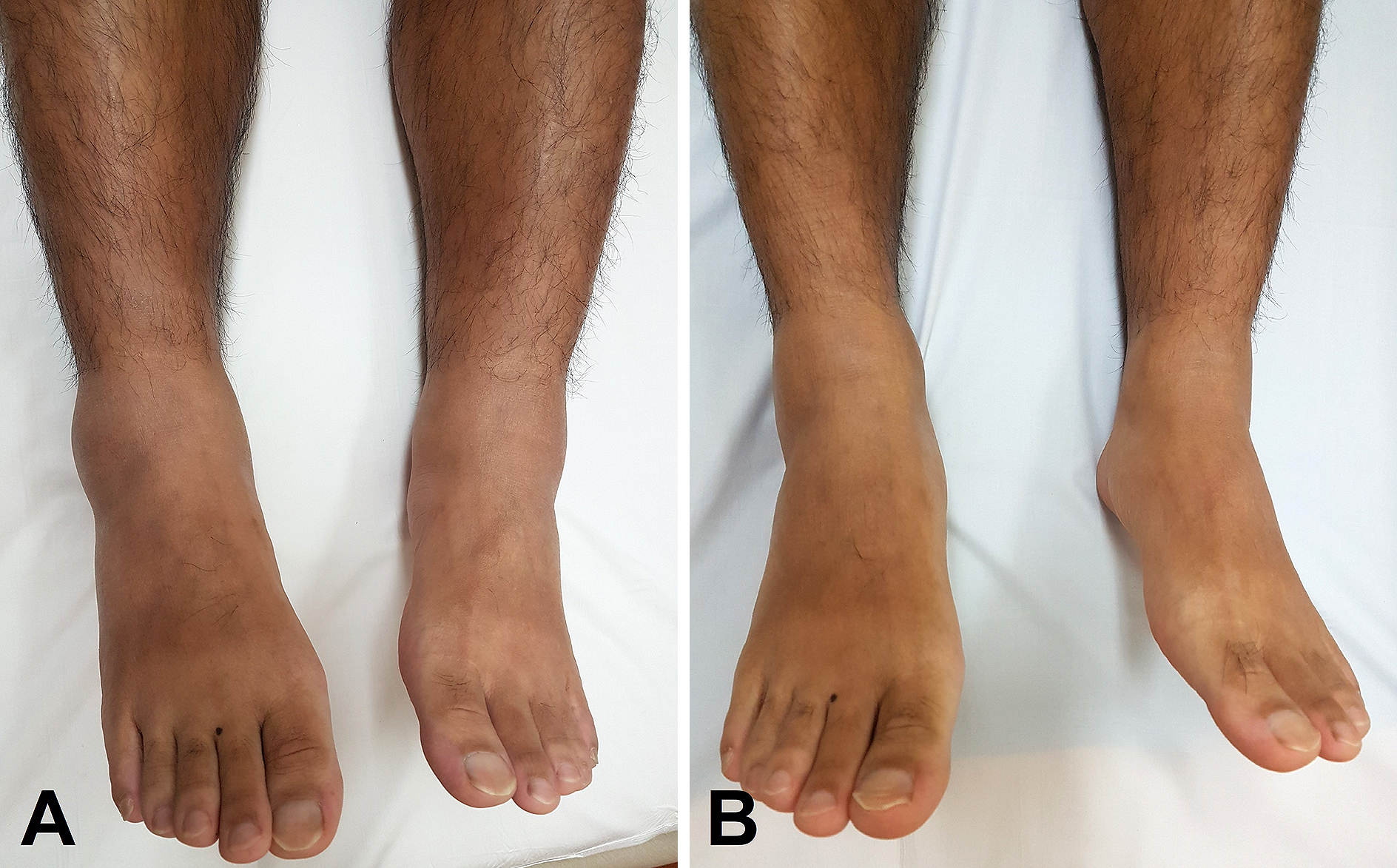Corresponding author: Thatchai Kampitak, thatchai_k@yahoo.com
DOI: 10.31662/jmaj.2021-0096
Received: May 21, 2021
Accepted: July 13, 2021
Advance Publication: September 13, 2021
Published: October 15, 2021
Cite this article as:
Kampitak T. Nonepisodic Angioedema with Eosinophilia. JMA J. 2021;4(4):432-433.
Key words: angioedema, eosinophilia, nonepisodic
A previously healthy 46-year-old Japanese man presented with a few-day history of bilateral symmetrical swelling of the lower extremities following mild influenza-like symptoms 1 week prior (Figure 1A). Only markedly high eosinophilia count (4,760/mm3) was found on laboratory tests. He was diagnosed with nonepisodic angioedema with eosinophilia (NEAE), which spontaneously resolved after 2 months (Figure 1B).

Nonepisodic angioedema with eosinophilia is characterized by nonrecurrent peripheral angioedema with eosinophilia and normal IgM levels along with lack of fever, weight gain, and internal organ involvement. It mainly affects young women from Japan, Korea and Thailand (1), (2), (3), (4). NEAE in men or involving body parts other than the lower extremities is unusual (5). Although its exact pathophysiology remains unknown, the female predominance and occurrence of this disease following infection or drug exposure in some patients are suggestive of NEAE being a consequence of an aberrant immune response to various exogenous stimuli in genetic susceptible individuals under the influence of sex hormones (4). Corticosteroid therapy is generally reserved for patients with severe symptoms or marked eosinophilia. However, regardless of treatment, even the most affected patients completely recover within few months after presentation.
None
Thatchai Kampitak contributed to manuscript preparation, patient care, and discussion
IRB approval was not required for this study
Informed consent has been obtained from the patient
Nakachi S, Inokuma S. Eleven cases of angioedema with eosinophilia treated in a single hospital in Japan. Allergol Int. 2012;61(2):259-63.
Takizawa Y, Setoguchi K. The unique clinical and laboratory characteristics of nonepisodic angioedema with eosinophilia: a case series of 18 patients. J Investig Allergol Clin Immunol. 2012;22(7):523-5.
Cho HJ, Yoo HS, Kim MA, et al. Clinical characteristics of angioedema with eosinophilia. Allergy Asthma Immunol Res. 2014;6(4):362-5.
Kampitak T. Nonepisodic angioedema with eosinophilia: a case series from Thailand. Allergol Int. 2017;66(3):510-1.
Kampitak T. Isolated bilateral hand swelling as an atypical presentation of nonepisodic angioedema with eosinophilia in elderly man. J Clin Rheumatol. 2020;26(8):e294.